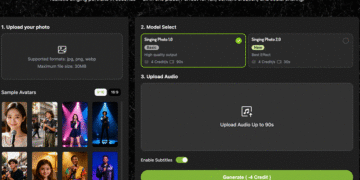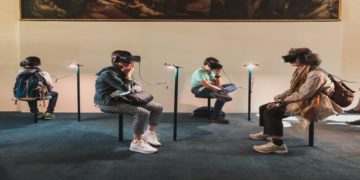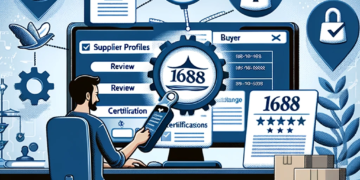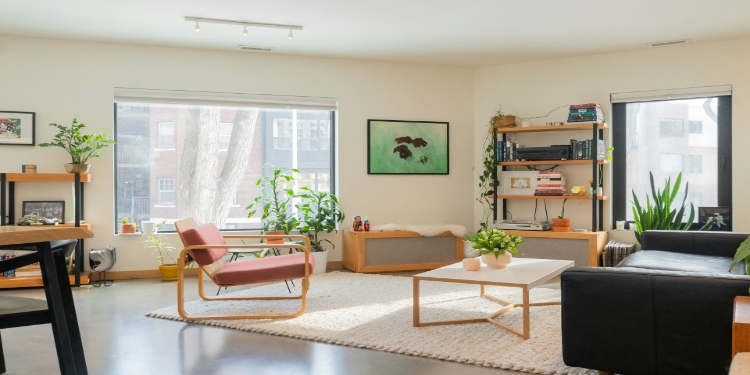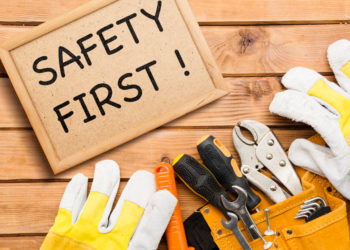In today’s fast-paced world, lifestyle shifts are reshaping how we live, work, and connect. From remote work becoming the norm to a growing emphasis on sustainability, these changes are influencing our daily routines and values. We’re witnessing a transformation that prioritizes well-being, flexibility, and community engagement like never before.
One clear example is the focus on health. People are more mindful about what they consume and how they support their bodies. Supplements such as a bariatric multivitamin with calcium citrate have become part of daily routines for many, reflecting the shift toward intentional and balanced living.
As we navigate this evolving landscape, it’s essential to understand how these trends impact our lives. Whether it’s the rise of digital nomadism or the shift towards minimalism, these lifestyle choices reflect a deeper desire for balance and purpose. Beyond diet and routines, even self-care practices are adapting, innovations like red neck treatment devices are helping individuals invest in their well-being in ways that align with modern lifestyles.
Join us as we explore the key lifestyle shifts that are redefining modern living and discover how we can adapt to thrive in this new era.
Overview of Lifestyle Shifts
Today’s lifestyle shifts reflect a transformative approach to modern living. As we adapt to these changes, understanding their implications becomes essential.
Understanding Modern Living
Modern living embraces flexibility, integration, and intentionality. We see individuals prioritize experiences over possessions, emphasizing well-being and mental health. Trends like minimalism encourage decluttering, allowing space for meaningful connections. By emphasizing work-life balance, we cultivate environments that support personal growth. This shift toward holistic lifestyles reflects a collective desire to find purpose and fulfillment beyond material success.
The Impact of Digitalization
Digitalization reshapes the fabric of our daily lives, facilitating instant communication and access to information. We leverage technology to enhance productivity and connectivity, with remote work becoming a staple for many. Online platforms foster community engagement, allowing us to share ideas and collaborate globally. As we embrace digital tools, we navigate challenges such as maintaining personal relationships and setting boundaries. These changes necessitate a reassessment of how we interact with technology for optimal balance and well-being.
Health and Wellness Trends
Health and wellness trends are evolving, reflecting our desire for balanced living. We’ve embraced holistic approaches that prioritize physical fitness and mental well-being.
Rise of Home Workouts
Home workouts are gaining popularity as fitness enthusiasts seek convenience and flexibility. We’ve seen a surge in online fitness classes, enabling us to exercise from the comfort of our homes. According to a 2022 report, 73% of individuals prefer at-home workouts for their accessibility and customization. Popular platforms offer diverse options, including yoga, strength training, and high-intensity interval training (HIIT). Innovative technology, such as smart fitness equipment and fitness apps, enhances our experience by tracking progress and providing motivation. This shift reflects a broader trend toward personalized fitness regimes that accommodate our busy lifestyles.
Mindfulness and Mental Health
Mindfulness practices are crucial in fostering mental health and emotional resilience. We’ve observed a significant increase in meditation apps, workshops, and resources focusing on stress reduction. A study indicates that 58% of individuals incorporate mindfulness into their daily routines to cope with anxiety and improve focus. Techniques such as deep breathing, journaling, and gratitude practices enhance our well-being, promoting a balanced mindset. Our collective emphasis on mental health encourages open conversations, reducing stigma surrounding mental health struggles and emphasizing the importance of emotional self-care.
Sustainable Living Practices
Photo by Lotus Design N Print on Unsplash
Sustainable living practices play a crucial role in modern lifestyles, emphasizing environmental responsibility and conscious choices. We observe various strategies individuals adopt to reduce their ecological footprint.
Eco-Friendly Consumerism
We prioritize eco-friendly consumerism by choosing products that minimize environmental impact. This approach involves selecting brands committed to sustainable practices, such as using recycled materials and adhering to ethical production standards. Many consumers now examine product ingredients, packaging, and supply chain transparency. We notice an increase in demand for alternatives like reusable bags and organic, locally sourced food. Trends show that 60% of shoppers actively seek eco-labeled products, reflecting a shift toward sustainability.
Minimalism and Decluttering
We embrace minimalism and decluttering as part of our sustainable living journey. This practice encourages reducing excess possessions, focusing instead on quality over quantity. Individuals often find that simplifying their living spaces enhances mental clarity and reduces stress. Surveys indicate that 78% of people experience relief and freedom from decluttering efforts. Adopting a minimalist lifestyle supports sustainable consumption while fostering a sense of purpose, reminding us that experiences hold more value than material possessions.
Remote Work Revolution
The remote work revolution transforms how we approach our jobs and daily lives. This shift impacts our workspaces and challenges our work-life balance.
The Evolution of Workspaces
Home environments now serve as multifunctional workspaces, blending professionalism with comfort. Many of us invest in ergonomic furniture and technology to optimize productivity. According to a recent study, over 70% of remote workers report increased satisfaction with their work-from-home setups. Open-home office designs are becoming increasingly popular, encouraging collaboration and creativity. Additionally, coworking spaces offer alternatives for those seeking social engagement while working remotely. These shared environments cater to various professions and often provide essential amenities, facilitating focused work.
Work-Life Balance Challenges
Remote work blurs the lines between personal and professional life, presenting new challenges for work-life balance. We often find ourselves working longer hours, feeling pressure to be constantly available. Studies indicate that 60% of remote workers struggle to disconnect after work hours. Without traditional office boundaries, distractions at home can also hinder productivity. Setting boundaries becomes crucial for maintaining mental health and overall well-being. Many of us adopt strategies like defined work hours and designated workspaces to combat these issues. Prioritizing self-care practices, such as scheduled breaks and limiting screen time, further helps us navigate these challenges effectively.
The Influence of Social Media
Social media plays a critical role in shaping modern lifestyles, influencing how we interact, express ourselves, and perceive the world. Its pervasive presence redefines interpersonal relationships and provides unique avenues for self-expression.
Changing Interpersonal Relationships
Social media alters our interpersonal dynamics significantly. We connect with friends and family across vast distances, fostering relationships that might not thrive without digital interaction. Instant messaging, video calls, and social platforms create virtual communities, bridging gaps and enhancing support networks. However, while we enjoy the benefits of connectivity, we also face challenges, such as the decline of face-to-face interactions and the rise of superficial connections. Research indicates that while social media enhances our communication, it can also contribute to feelings of loneliness and anxiety, prompting us to seek balance in our digital engagement.
New Forms of Self-Expression
Social media offers diverse avenues for creativity and self-expression. We witness individuals sharing personal stories, art, fitness journeys, and travel experiences, contributing to a culture that values authenticity and relatability. Platforms like Instagram and TikTok enable us to showcase our talents and explore new identities, often leading to the emergence of niche communities centered around shared interests. The democratization of content creation empowers us to redefine our social narratives; however, we must navigate the pressures of online validation and curated identities, ensuring our self-expression remains genuine amidst the allure of popularity. For more insights on lifestyle trends, check out The New York Times.
David Prior
David Prior is the editor of Today News, responsible for the overall editorial strategy. He is an NCTJ-qualified journalist with over 20 years’ experience, and is also editor of the award-winning hyperlocal news title Altrincham Today. His LinkedIn profile is here.




